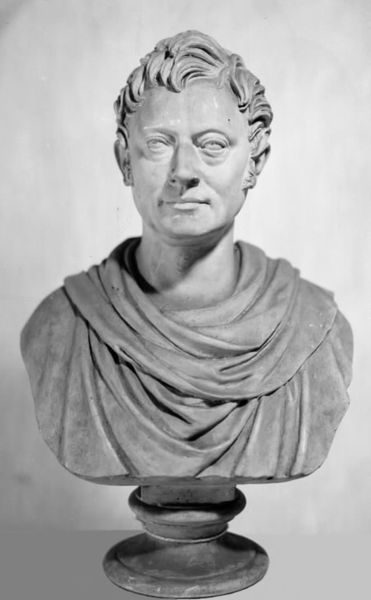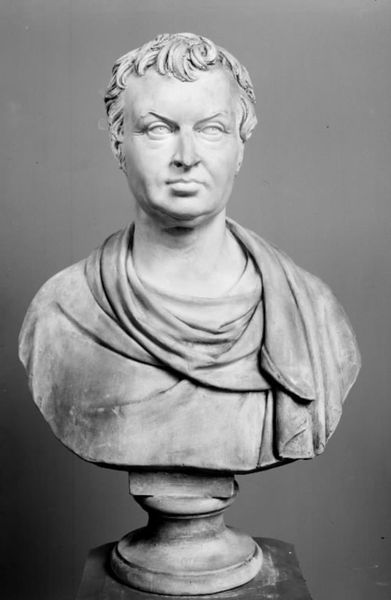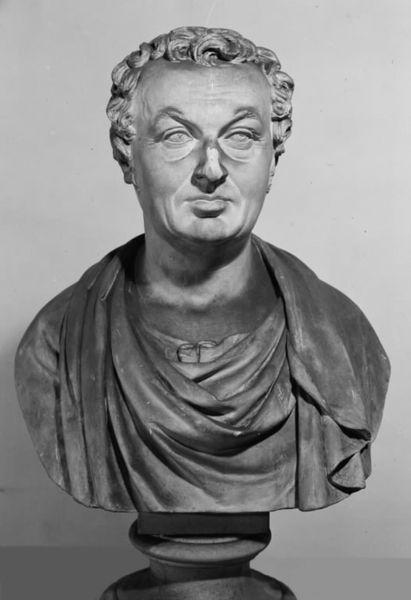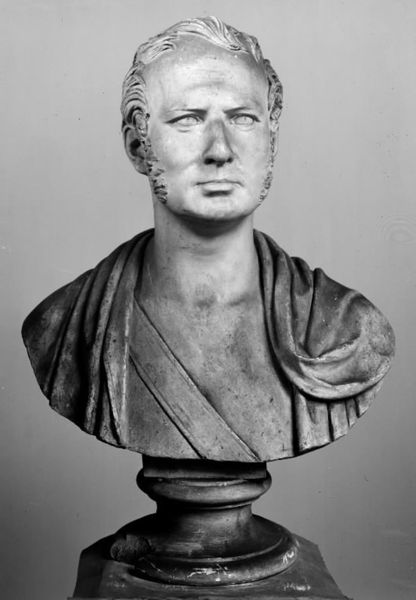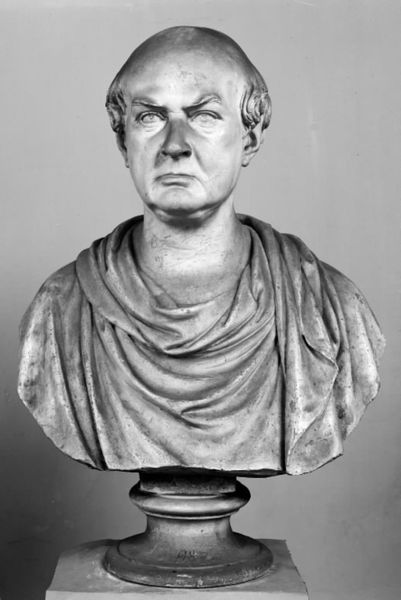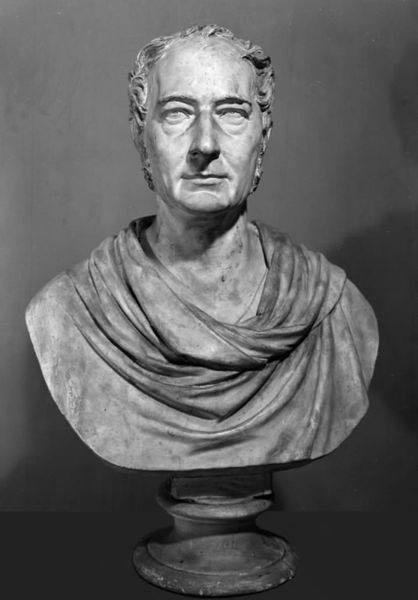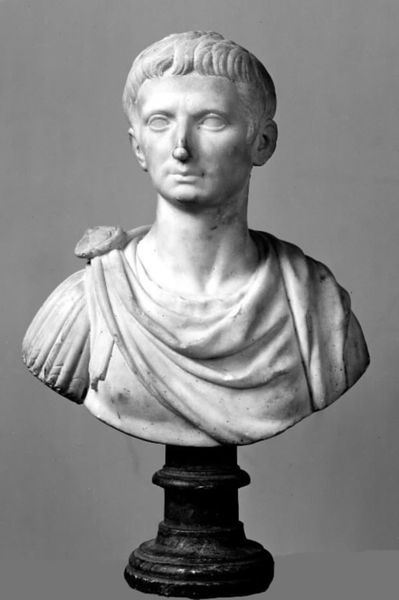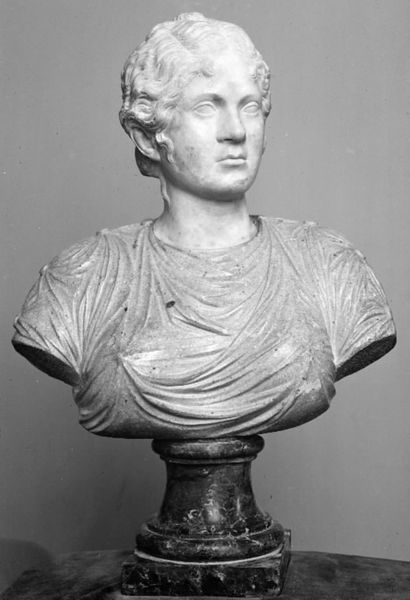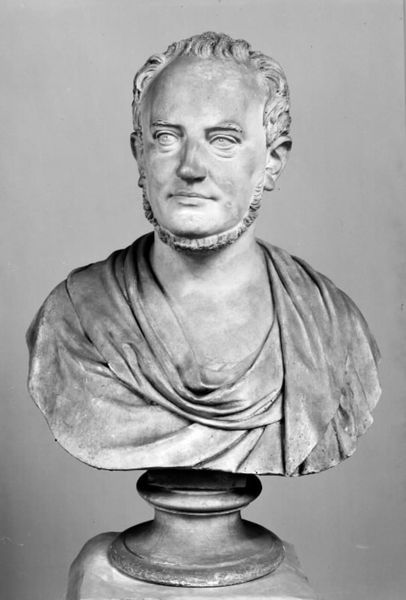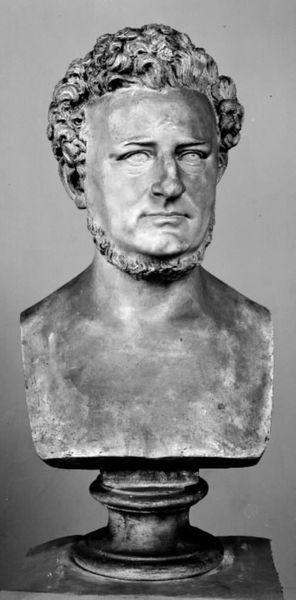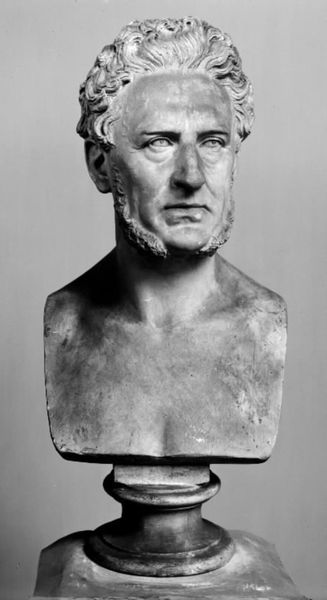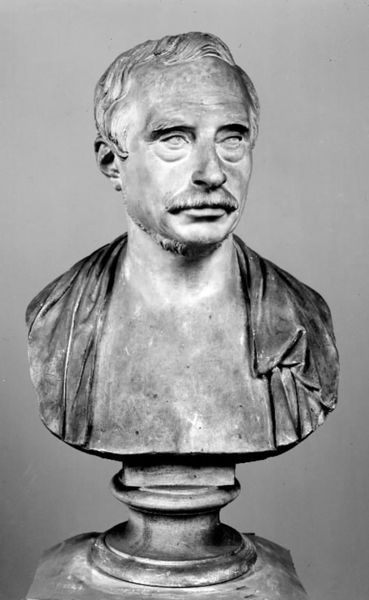
sculpture, marble
#
portrait
#
neoclacissism
#
portrait
#
sculpture
#
classicism
#
sculpture
#
history-painting
#
marble
#
statue
Dimensions: 70.2 cm (height) (Netto)
Editor: So, we're looking at "Rigsgreve W.C.E. Sponneck," a marble sculpture created in 1851 by H.W. Bissen. The first thing that strikes me is the classical style. What can you tell me about it? Curator: Focusing on materiality, consider the sheer labor involved in extracting and shaping marble. Bissen wasn’t just depicting Sponneck; he was engaging with a long tradition of classical sculpture deeply intertwined with notions of power and empire. How does the choice of marble as a medium affect the work's reception? Editor: I see your point. Marble immediately evokes a sense of permanence and grandeur, like ancient Roman sculptures. Did the availability and sourcing of materials play a part in deciding to create a sculpture like this? Curator: Absolutely! The marble itself wasn't neutral. Its source, its quality – these details reflected economic power and trade routes. Bissen and his patrons weren't isolated. They were participants in global networks of material exchange. Do you think using another, more local material would give us a different idea? Editor: Definitely. Using bronze, for instance, might connect the work more to contemporary industry rather than classical ideals. I’m also thinking about the social status that is implicit. I assume marble sculpture of this scale was quite expensive at the time, affordable to upper-class families alone? Curator: Exactly! Who could afford this? The patronage system dictated much. And within that system, sculptors like Bissen navigated complex relationships. Consider the message sent by depicting Sponneck in a way that connected him to the wealthy Roman elite. Editor: So, by focusing on the material and production of this sculpture, we can see how it's tied to larger social and economic forces at play in 19th-century Denmark. Thanks! I’ve got some good insights into a fresh new way of seeing such works. Curator: I concur. Focusing on those elements and those conditions encourages us to unpack the intricate relationship between artistic expression, economic power, and social hierarchies.
Comments
No comments
Be the first to comment and join the conversation on the ultimate creative platform.
